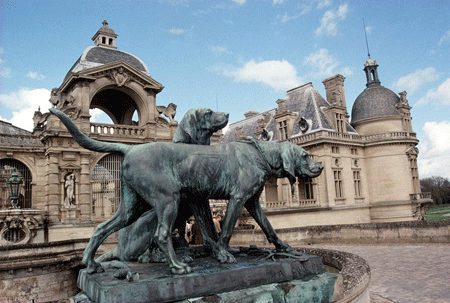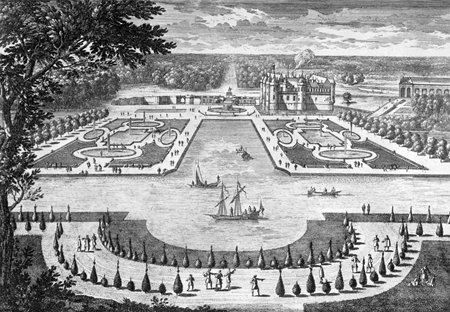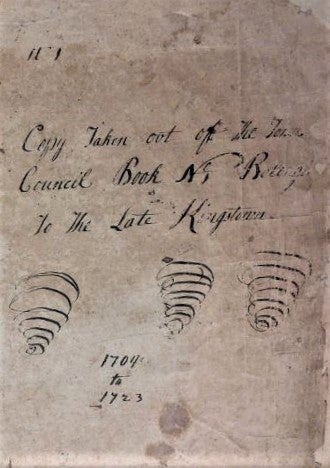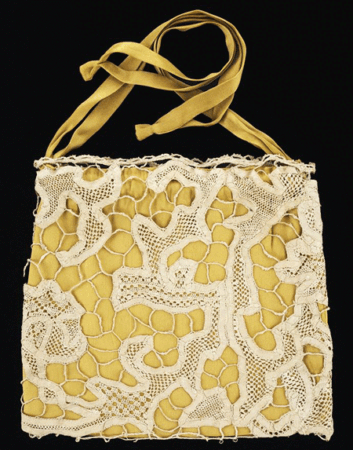Wrapped Up in Lace: Chantilly

Unknown (French) |Collar (Cape Collar) ; ca. 1835 | The Metropolitan Museum of Art | Image © The Metropolitan Museum of Art
Lisa Hartley, Columbus College of Art Design
The small town of Chantilly, France, is home to Chantilly Castle, an architectural wonder of sandstone, antiquated fountains, and enchanting gardens. Here is where lace, my research niche and mild obsession, takes center stage. The traditions and skills used in lacemaking date back to early as the 16th century Europe where the nobility commissioned workers to create dresses, parasols, shawls and gloves in beautiful openwork fabric. Coco Chanel once said, “Lace is one of the prettiest imitations ever made of the fantasy of nature,” and we have Chantilly to applaud for its origins.

Préville | Gloves, Wedding; 1842 | The Metropolitan Museum of Art | Image © The Metropolitan Museum of Art
Thanks to ARTstor I can browse through hundreds of photos, portraits, and costumes embossed and designed with exquisite lace fabrics. In fact, photos in the ARTstor Digital Library led me to finding, Chantilly, 35 km north of Paris. Known today for its horseracing, the town still evokes a timeless elegance, with extensive fountains and pools of lilies that dot the estates and farms throughout the area. Chateau de Chantilly, the grand estate, was owned by the House of Bourbons from the 17th to 19th century. It was here that the French Princess Anne Geneviève de Bourbon is credited for creating Chantilly’s manufacturing district and orchestrating the first mass-produced Chantilly lace.
We can appreciate the White Lace Glove, circa 1650 -1700, today because of the craftsmanship that was applied to it nearly 350 years ago. From the tips down, the lace mirrors the finger’s bones, and cascades down to the back of the palm in a floral wave of bone white leaves and petals. At the far wrist the glove comes to an end with velvety ribbons tied into small bows, creating the ultimate 18th century feminine accessory. Perhaps the most ardent fan of Chantilly’s lace was King Henry XV’s official maîtresse-en-titre, Madame du Barry. Look closely at the Portrait of Madame du Barry painted in 1782 by Elisabeth Louise Vigee-Lebrun and you will see the delicate white Chantilly lace finishes around the collar and sleeves of her hazy blue dress. Laces similar to Madame du Barry’s can be viewed at Musée du Patrimoine & de la Dentelle in Chantilly.
Learning the history of lace and about the town of Chantilly has inspired me in a number of ways. Currently I’m working on a project designing my own lace patterns using the Adobe Suite. Last year CCAD was given a generous gift and we were able to purchase a state-of-the art laser cutter. Yes, it too can make lace of a different sort. Just like the original bobbins, the laser dances on top of the fabric, mimicking the silhouette of lace. Inspired by the historical methods of lacemaking, my hope is to pay homage to the earliest forms of the craft and create my own couture-inspired lace by end of summer.





